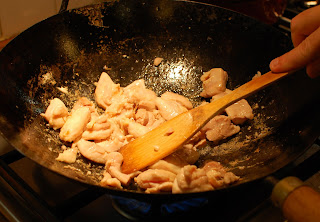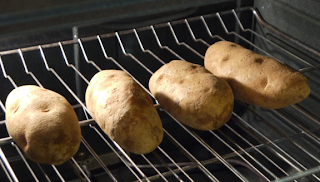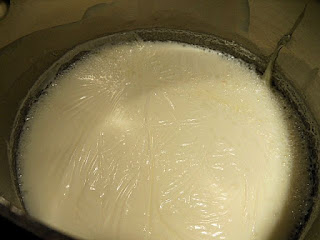This post was originally written for and appeared on the Virginia-Highland Civic Association website on November 13, 2012
The sidewalks come to life each Saturday as neighbors scuttle by with empty shopping bags headed toward the
Morningside Farmer’s Market located in the parking lot adjacent to Rosebud on North Highland Avenue. The brainchild of culinary icon Guenter Seeger and former Atlanta Journal-Constitution “In-Season” columnist Cynthia Hizer, the MFM began in 1997 with a station wagon loaded with Georgia-grown vegetables and grew to become Atlanta’s most popular organic market and is at the heart of the city’s farm-to-table movement.

The most recent Saturday offerings included a variety of seasonal greens (arugula, kale, mustard, chard and collards), sweet potatoes, red onions, fresh ginger, squashes, eggs and fresh meat products from Market regulars Crystal Organic Farm, D & A Farm, Little Red Hen Farm, Riverview Farm and Woodland Gardens. Pure Bliss Organics sampled their newest granola flavor, while Magnolia Bread had a nice selection of fresh breads on hand including pumpkin sourdough, seeded country and blueberry bran muffins. Our perennial favorite, Hazelbrand Farm, featured their amazingly fragrant handmade soaps along with a few seasonal scents like “Winter Solstice” and “Frankincense & Myrrh.”
The sun was high in the sky as the 2009 Top Chef Finalist, Kevin Gillespie from
Woodfire Grill, began his cooking demonstration featuring fresh mustard greens chosen from Crystal Organic Farms mere moments before. The chef was on hand earlier signing his new cookbook, "Fire In My Belly."

Chef Kevin was in high spirits as he described the recipe he was preparing. Obviously comfortable in front of an audience, he casually chatted with the crowd as he worked, explaining how to peel ginger with the bowl of a spoon and describing the nuances of various types of greens. As he added the various ingredients, wonderful aromas wafted through the patio of Rosebud (graciously lent for chef demonstrations each week) culminating in a large pot of curried mustard greens and sweet potatoes.
As Chef Kevin dished about his cookbook and his new restaurant, Gunshow, scheduled to open in Glenwood Park in February, each audience member was passed a small portion on a plate. The pungent taste of the mustard greens and the sweetness of the sweet potatoes combined to make a vegetarian dish that was colorful and boasted a wonderful combination of flavors and textures.
Chef Kevin was obviously so familiar with this dish that he needed no recipe, adding spices and elements without specific measurement. We did our best to enumerate the ingredients and the procedures followed by Chef Kevin in hopes that you might try this recipe at home:
- 2 tablespoons clarified butter (or extra virgin olive oil)
- 1 medium onion, chopped
- 1 jalapeño pepper, seeded if desired, then minced
- 4 garlic cloves, minced
- 1 1-inch piece fresh ginger root, peeled and diced
- 1 ½ teaspoons curry powder
- 1 teaspoons mustard seeds
- ½ teaspoon cumin seeds
- 1 to 2 cups vegetable broth as needed
- 2 medium orange-fleshed sweet potatoes, peeled and cut into ½”-slices (about 2 cups)
- 1 15-oz. can whole peeled tomatoes, hand crushed
- 3-4 bunches kale, mustard or collard greens, stems removed, torn or roughly chopped
- 2 teaspoons light brown sugar (to taste)
- 1 tablespoon Tamarind paste (or lemon juice)
- Salt and white pepper to taste
- Chili paste to taste (optional)
- 1/3 cup fresh cilantro, chopped
Bring a small pot of water to a boil. Slice sweet potatoes into ¼”- ½” slices so they will cook more quickly. Parboil the sweet potatoes for 5 to 7 minutes until slices are tender, but not mushy.
While parboiling the sweet potatoes, remove stems from greens (these can be roughly chopped and parboiled with the sweet potatoes) and tear leaves into pieces. It will seem like an enormous amount of greens, but they shrink dramatically when cooked!

Drain sweet potatoes and set aside. Slice onion, jalapeno, ginger and garlic. Heat clarified butter in a saucepan over medium heat and add onion, jalapeno and cook until onions start to turn translucent; about 5 minutes. Add garlic and ginger to pan along with mustard and cumin seeds, and curry powder. Stir to coat and then add sweet potatoes, again stirring to coat. Continue cooking until vegetables begin to caramelize. If the vegetables are to dry or start sticking to the pan, add some broth or water.
Once the vegetables are tender and fragrant, add the crushed tomatoes and mix together well. Once the tomatoes have been fully incorporated and heated through, begin adding mustard greens in batches, folding the greens under the sauce. The greens will wilt and shrink as they cook. Keep adding and folding until all greens have been added to the pan.

Again, add more broth if the mixture seems to dry or sticks to pan. The amount of time the greens need to cook depends on their tenderness. Add sugar and tamarind paste (or lemon juice) stirring to combine. Add salt and pepper to taste. If you like your curry to be on the spicy side, you can add chili paste to fit your taste. Serve immediately. If the greens are particularly piquant, chopped cilantro added as garnish provides a nice contrast. Chef also recommends that if you want to add a protein to the dish, chickpeas or lentils make an excellent complement to the dish.
While the Morningside Farmer's Market runs year round, hours are abbreviated January through March and chef demonstrations are held April through the end of November. The next demo will be this Saturday, November 17th with Ron Eyster from Rosebud and The Family Dog working with cabbage from Woodland Gardens Organics. The demo will begin at 9:30 a.m.
For more information about the MFM or for a calendar of upcoming events, visit their website at
http://www.morningsidemarket.com.
 The word “toast" is also used to describe the tradition of honoring a person or occasion with a drink. Europeans toast and clink glasses whenever possible, and we're seeing it more and more in America. From simple clinking of glasses with a friend to clinking all around in a crowd, cheery shouts of “Salud,” “Cin Cin,” “Skoal” and “Proost” abound. It is always good manners to look the holder of the other glass directly in the eye before you take a sip. More formal toasting is generally made by the host to an honored guest, but recently it has been extended to the host by a guest. What is said in a toast matters less than how it is said. For a toast to sound as if it just came to you in an affectionate flash, it will have to be prepared ahead of time. Know your message, how to open, and how to close. A quote is always nice. Be cheery, to the point, short and sweet. Lastly, mean what you say! If a toast isn't sincere, everyone will know it.
The word “toast" is also used to describe the tradition of honoring a person or occasion with a drink. Europeans toast and clink glasses whenever possible, and we're seeing it more and more in America. From simple clinking of glasses with a friend to clinking all around in a crowd, cheery shouts of “Salud,” “Cin Cin,” “Skoal” and “Proost” abound. It is always good manners to look the holder of the other glass directly in the eye before you take a sip. More formal toasting is generally made by the host to an honored guest, but recently it has been extended to the host by a guest. What is said in a toast matters less than how it is said. For a toast to sound as if it just came to you in an affectionate flash, it will have to be prepared ahead of time. Know your message, how to open, and how to close. A quote is always nice. Be cheery, to the point, short and sweet. Lastly, mean what you say! If a toast isn't sincere, everyone will know it.































